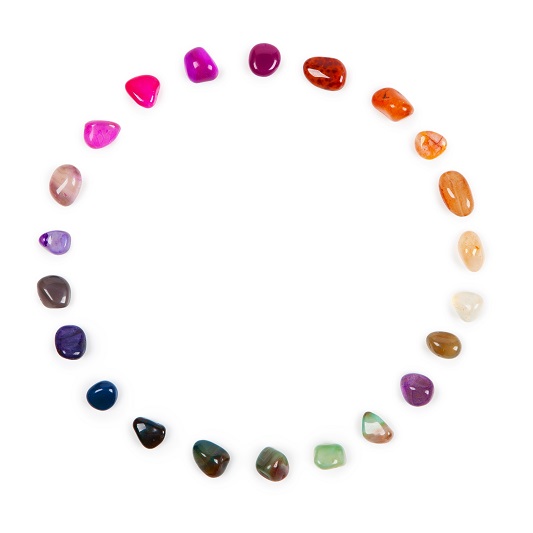Your Complete Guide to Gold

French Jewellers: Our All-time Favourites
13th July 2017
Your Complete Guide to Platinum
21st July 2017For thousands of years, gold has played an essential role in society. From being a symbol of wealth and riches to being one of jewellery’s most commonly used precious metals, gold not only looks spectacular, but it also has a captivating history. In this article, we explore the extensive history of gold, different gold karats and their value, the biggest gold deposits, and gold in popular culture.
History of Gold
It was way back in 3600 BC that gold was first smelted having been mined by Egypt’s first dynasty. Egyptians smelted gold in furnaces heated by fire-resistant clay blowpipes. Following the Egyptians’ smelting of gold, there is little proof for how they used the gold. Gold jewellery didn’t come to light until 2600 BC when goldsmiths in what is now Iraq used gold to create pendants to adorn a burial headdress featuring lapis and carnelian beads. The next considerable find in gold history arrives in the form of Tutankhamun’s infamous funeral mask, which was created in 1223 BC and discovered in 1925.
Gold has long had a place in culture as currency, which King Croesus, the king of ancient Lydia, established in 564 BC. Croesus fronted the development of gold refining techniques, which led to him creating the world’s first standardised gold currency: Croesids. Before Croesids, gold had been used in trade in varying amounts without any form of standardisation and, therefore, exact value, which made trading difficult. Following Croesids, both Greek and Roman Empires used gold coins as currency.
Why is gold so precious? Quite simply, because of its rarity, which makes it expensive, too. Gold is also durable when mixed, however, naturally soft. It does not oxidise and is very difficult to corrode.
It wasn’t until 1300 that notable developments in gold occurred. The world’s first hallmarking system, established at Goldsmith’s Hall in London, defined the characteristics of gold and how its quality is determined. However, just 70 years later, some of the world’s largest gold deposits began drying up.
Christopher Columbus and His Love of Gold
Despite popular belief, Italian explorer Columbus wasn’t the first to “discover” America, however, he was the first European to explore the Central and South American coasts. He landed in America on a voyage of discovery, in which he hoped to land in Asia with the aim of finding riches in the form of pearls, jewels, gold and spices. He had an agreement with King Ferdinand and Queen Isabella of Spain that entitled him to 10% of profits from his voyage. In 1503, he wrote a letter to King Ferdinand and Queen Isabella to divulge his love of gold, saying: “Gold is most excellent; gold is treasure, and he who possesses it does all he wishes to in this world.” Politically, over the years, this has proved true.
Gold in Modern Day
In modern culture, there is a standard for gold. In 1717, the British Government linked its currency to gold at a fixed rate, which established that one ounce of gold equals 77 shillings and 10-and-a-half pennies. However, it wasn’t until the 1870s that all other major countries, excluding China, linked their currency to gold. Largely, it was the California Gold Rush that started in 1848 and the South African Gold Rush which began in 1885 that triggered the adoption of the gold standard internationally. Since then, gold has had ups and downs, including being suspended in 1933 by President Roosevelt and the closing of the London gold market in 1939 when the Second World War started. In 1961, around 41kgs of gold was even used in the first manned space flight to protect instruments from radiation.
Since 2010, gold has continued to increase in value with record highs year-on-year.
Gold Karat Weight Explained
In simple terms, gold karat is what determines the gold’s purity and, therefore, quality and value. In gold jewellery, for instance, the higher the karat, the more expensive the item. Pure gold is 24-karat.
For jewellery, manufacturers mix pure gold alloy with other metals such as copper, silver and palladium. Popular karat values include 9-karat, 14-karat, 18-karat, and 22-karat, and each karat value specifies how pure the gold is. For instance, 18 karat gold is 18 parts gold and six parts other metal. By mixing pure gold with other metals, the metal becomes stronger, and the cost comes down, which makes it much more accessible. It is also the mixture of metals that determine the colour of the gold. For instance, white gold is a mix of palladium, silver and nickel, while rose gold incorporates copper and green gold includes silver. For authenticity and clarity, when shopping for gold jewellery especially, make sure the jewellery has a karat value stamp which confirms the metal’s consistency.
Where is Gold Found?
Gold is one of the only metals to be found on every continent on Earth, aside from Antarctica. It is mined using both underground and open pit mining methods. Some of the largest gold mines are in the United States, Canada, South Africa, Russia, Peru, China, Australia, and Indonesia. The biggest gold mines in the world include Grasberg in Papua, Indonesia, which contains more than 100 million ounces of gold, closely followed by South Deep near Johannesburg, South Africa, which holds more than 81 million ounces of gold. Other notable locations include Olympiada in Siberia, Russia, which contains more than 47 million ounces of gold, as well as the Cadia East mine in New South Wales, Australia. There are also significant gold deposits under the ocean; however, deep sea mining is still very new.
Wherever you are in the world, it’s likely you have an enormous gold deposit on your doorstep.
Gold in Popular Culture
Undoubtedly, it is gold’s inclusion in popular culture that has aided its continued popularity. Gold regularly features in films, as well as medals and decorations. For instance, gold often features in the Indiana Jones film franchise, as well as in the form of treasure in Pirates of the Caribbean (2003) and family favourite The Goonies (1985). It also features in classic films such as Treasure Island (1950), Time Bandits (1981), and The Treasure of the Sierra Madre (1948), plus more. Modern awards such as the Academy Awards, Golden Globe Awards, Noble Prize, and Olympic medals also feature gold.
For thousands of years and still today, gold has cemented itself a position in culture as not only a sign of wealth, but also a symbol of success, beauty and, sometimes, frivolity. Whether you love or loathe gold, if you’re shopping for gold, always be aware of gold karat and never exceed your budget.




